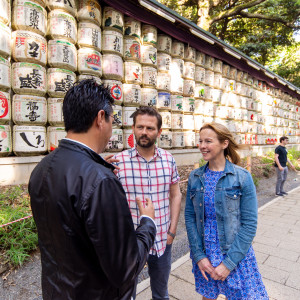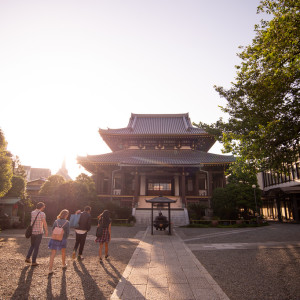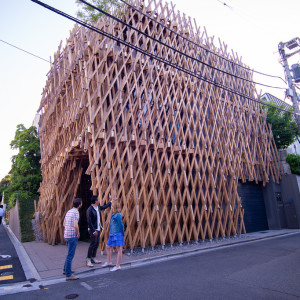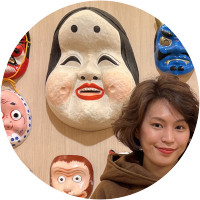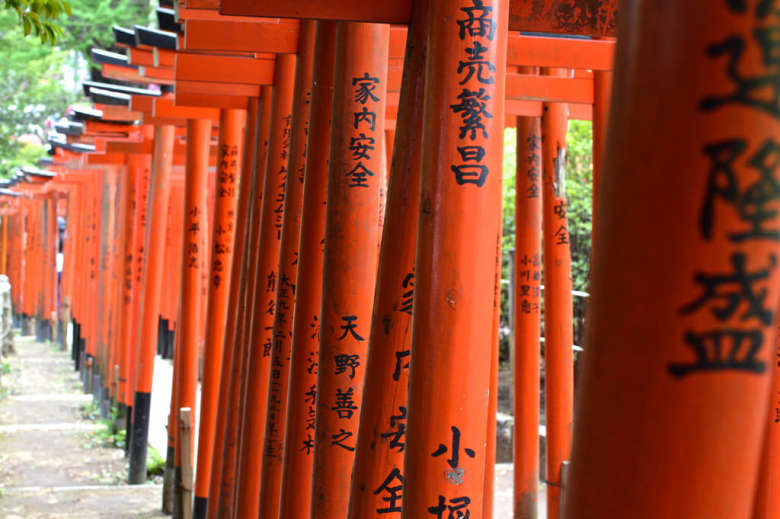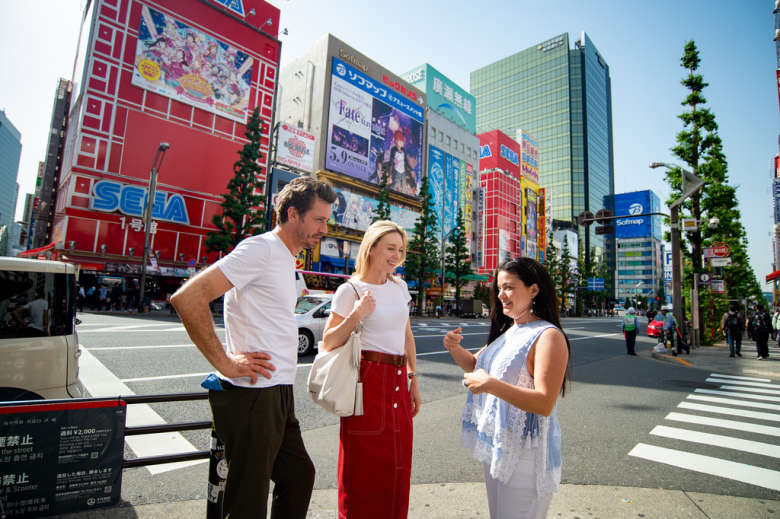Tour Details
Duration
3 hours
Product Type
Tour
Venues
- Meji Jingu Shrine
- Harajuku
- Omotesando
Select a date
Tour Description
This three-hour tour is designed to provide a perfect introduction to Tokyo for first-timers or to reorient returning travelers to the aesthetics of the Japanese capital. Join a local architect or design writer to explore the districts of Harajuku and Omotesando, looking not only at buildings and architectural design but also at the underlying aesthetic principles that inform Japanese design. Through our examination, we'll develop a more nuanced appreciation of Japanese art, architecture, and culture as a whole.
Meiji Jingu presents an ideal starting point for our tour of Tokyo, both for the time period it represents and as an example of traditional Japanese design. At this Shinto shrine, dedicated to 19th-century ruler Emperor Meiji, we’ll discuss how traditional aesthetics are the foundation for the modern and contemporary design that followed. (For a more detailed look at the Meiji, take a look at our Tokyo National Museum Tour).
Next, we’ll travel to Harajuku and Omotesando, two closely situated areas that represent quite different manifestations of what modernity in Japan means. Our time in Harajuku will allow us to delve into some of the colorful subcultures that Tokyo is known for and to see how one’s exterior reflects principles tied to hobbies, values, and social roles. (We provide a deeper look at Anime and Manga, which will no doubt be on display in Harajuku, on our Otaku Culture Tour). Afterwards, we’ll move through Omotesando, an architectural feast for the eyes, where the main luxury merchants, from Prada to Dior, have used architecture as an extension of their brands’ aesthetic principles.
Depending on the time and our interests we may finish at Kengo Kuma's Nezu Museum, the 21 21 Design Site, Nogizaka’s National Art Center of Tokyo, or even Roppongi Hills, an integrated urban development. By the end of our architecture walking tour of Tokyo, we’ll understand how a distinct design sensibility, aesthetics, and style are displayed across the city, reflecting Japanese history and a unique understanding of what constitutes good design.
Meiji Jingu presents an ideal starting point for our tour of Tokyo, both for the time period it represents and as an example of traditional Japanese design. At this Shinto shrine, dedicated to 19th-century ruler Emperor Meiji, we’ll discuss how traditional aesthetics are the foundation for the modern and contemporary design that followed. (For a more detailed look at the Meiji, take a look at our Tokyo National Museum Tour).
Next, we’ll travel to Harajuku and Omotesando, two closely situated areas that represent quite different manifestations of what modernity in Japan means. Our time in Harajuku will allow us to delve into some of the colorful subcultures that Tokyo is known for and to see how one’s exterior reflects principles tied to hobbies, values, and social roles. (We provide a deeper look at Anime and Manga, which will no doubt be on display in Harajuku, on our Otaku Culture Tour). Afterwards, we’ll move through Omotesando, an architectural feast for the eyes, where the main luxury merchants, from Prada to Dior, have used architecture as an extension of their brands’ aesthetic principles.
Depending on the time and our interests we may finish at Kengo Kuma's Nezu Museum, the 21 21 Design Site, Nogizaka’s National Art Center of Tokyo, or even Roppongi Hills, an integrated urban development. By the end of our architecture walking tour of Tokyo, we’ll understand how a distinct design sensibility, aesthetics, and style are displayed across the city, reflecting Japanese history and a unique understanding of what constitutes good design.
FAQ
What is a private tour?
Our private tours are limited exclusively to travelers in your party. They are designed to provide a learning experience that is completely tailored to you and your traveling companions. Private tours give you more flexibility with scheduling (you decide when the walk best fits in your trip), the ability to tailor your itinerary (we'll work to match the itinerary to the interests and dynamics of your group), and more personalized time with your guide.
Where do we meet? Where does it end?
Generally speaking, the walk begins in the Harajuku neighborhood. Your confirmation email will have the exact meeting point details along with a map. The walk might end at 21_21 Design Museum, or if the group covers a fast pace, Roppongi Hills.
What if it’s raining?
Tours operate rain or shine, but in the case of inclement weather, your guide will modify the tour so more time is spent indoors. It never hurts to have an umbrella on hand.
Is this a walking intensive tour?
This walk covers about 2.5 miles overall at a moderate pace. There are occasional opportunities to sit, use the bathroom, and get something to drink if needed.
Is it okay to tip my guide in Japan?
Context clients generally tip anywhere from 10-25% of the purchase price of a personal service such as this, depending on the quality of the experience and their tipping habits.
Experts
Where You'll Start
–
460 Reviews
Reviews can only be left by Context customers after they have completed a tour. For more information about our reviews, please see our FAQ.
John was a terrific guide and most knowledgeable guide with a wicked sense of humor. The driving rain we had for 3 hours seemed to bother him less than some in our party. Perhaps pulling over in covered areas to explain some aspect of the city would have been more comfortable, instead of standing in the rain with all of our umbrellas dripping on each other. Otherwise, a terrific morning. i would recommend him to my friends.
Suzanne
Reviewed on:
May 25, 2014
We think all good but we really would have enjoyed entering some of the buildings. John, our docent, was a heckuva nice guy with interesting perspectives on Japanese society. However, we had the impression that Context docents were experts in their field. John is not an expert in architecture, rather an artist who has done some reading in order to lead this walk. We asked several questions about the buildings and he said he didn't know anything about them, that they had just been put up since the last time he conducted the walk. We expected greater depth of knowledge that he had to offer.
Susan
Reviewed on:
Oct 6, 2013
Most things were perfect - I really can't complain.
Karishma
Reviewed on:
Jun 18, 2013

